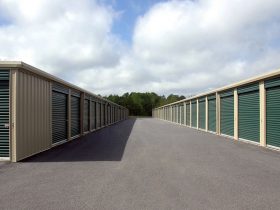While home heating systems and furnaces are incredibly dependable, that doesn’t mean they run for years without any attention. Like anything mechanical, parts and systems need to be maintained. Even more so with a furnace, temperature changes and stress on the structural system from heat creates wear and tear. Add in the fact that not checking on filters allows contaminants to get into the furnace system, creating burn issues, then more problems occur. Maintenance is a key aspect in the long life of a furnace. The more regularly a home furnace is maintained, the longer it will last.
Problems with Furnaces
A wide range of issues happen with home furnaces, both due to their temperature impact and contaminants. Believe it or not, dust and pests can be just as much a problem in a furnace as mechanical failure. It doesn’t happen often, but when there is a problem, it can trigger a cascade of issues if not addressed quickly. Fortunately, a furnace maintenance plan anticipates and looks for these problems before they become big headaches.
Evaluation and Checks
The first step in any maintenance review is simply checking that the system performs as expected. This involves turning it on, running the system on command, and confirming it does what is expected. Based on flow measurement of warm air, then concerns in regard to blockage or leakage can be identified.
The second step is cleaning out all filters and replacing them regularly. Filters are probably the lowest cost and most powerful maintenance that can be done on a furnace. Because a home heating system involves air flow, it has to go through the burner and then be pushed out. Debris, dust, bugs and microscopic pollution can contribute to hot spots or burn material that starts to create a problem for a furnace. Additionally, a dirty filter makes it harder for the furnace system to push air through, making it work harder. Clean filters allow optimum flow, catch contaminants and keep the furnace running with clean air.
The third review is mechanical. Both the structure of the furnace and the ductwork should be checked for problems. What good is a heating system if all the hot air is escaping through a duct leak in the attic? Furnace cracks are also a problem, potentially letting out carbon monoxide, which could be harmful and even fatal in concentrations. All mechanical parts from the heater unit to the blower and connected ductwork are visually inspected for any early problems or concerns. Catching these issues before they become a concern saves money as well as headaches with a failing system later.
Technical review also includes examining the heater exchange for corrosion or part failure, as well as testing and confirming all electrical connections are working properly. Finally, there is the burner sensors and pilot light review as well as safety shutoff system checks. In short, a furnace maintenance cycle is more than just turning on the system and seeing if it works. It’s a comprehensive approach for both the longevity of the system and home safety.
DIY Versus a Professional Review
Can furnace maintenance services be taken care of by a homeowner? Some aspects like a filter change absolutely and should be addressed by a homeowner when physically possible. However, the technical checks and system examinations should be handled by a trained heating technician and professional. While these things can be learned by a homeowner, a heating technician practices them every day as a career. That ends up catching hundreds of issues and concerns that an occasional DIY approach can easily miss. And given that a home furnace is dealing with natural gas or heating oil as a fuel source, there’s little room for mistakes.
Save the guesswork and have a professional apply furnace maintenance. It’s an incredibly affordable and smart move for your home furnace protection.







Leave a Reply